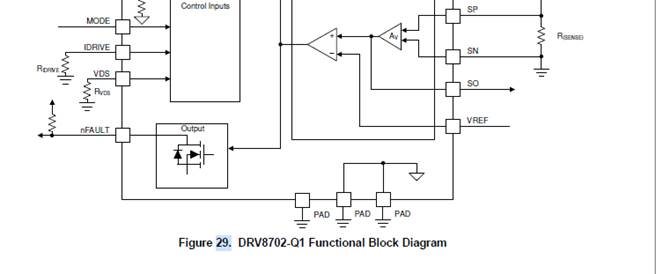Other Parts Discussed in Thread: DRV8702-Q1,
Hello Team,
Could you please help answer a customer question?
Is it possible to leave the VREF-Pin floating if the part is operating with Independent PWM Control mode (MODE = 1). Can the application be affected by a floating VREF-Pin in this mode in any way?
In the Datasheet it is said: „If the independent PWM control-interface mode (MODE pin is 1) is selected for operation, the device does not perform PWM current regulation or current chopping.“
http://www.ti.com/lit/ds/symlink/drv8703-q1.pdf?&ts=1589965862072
Thank you very much in advance.
Best Regards,
Needhu




